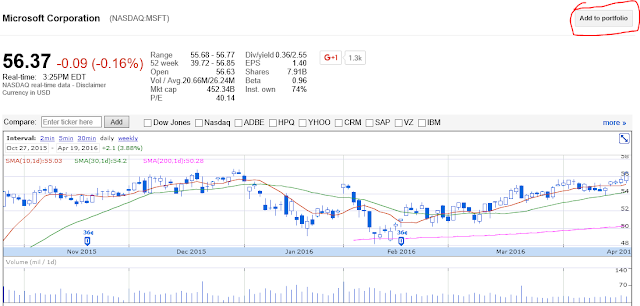Below is an article copied from TD Ameritrade’s Ticker Tape that is a newsletter added to daily by TD Ameritrade for it’s clients. It illustrates a very useful study that can be added to your charts in the Think or Swim platform. Yes, you must have a TD Ameritrade account to make use of this platform. Although, paper traders can open a TD account and do not have to fund the account (you can have a zero balance) and still download the platform and open it in “Paper Money” and practice trading. You can add to your learning of how this works in real time by catching David’s daily Market Forecast video on YouTube. You do not need to have a TD Ameritrade account to view these daily recaps. Here’s the article:
Market Forecast: Stocks Break Winning Streak with Tight Range
By David Settle, Curriculum Development Manager, Investools
September 9, 2016
After closing higher for five straight months, the S&P 500 finished August with one of its quietest months ever. This is not typical for the last month of the summer where volatility tends to increase.
Last year in August 2015, the S&P 500 suffered a five-day losing streak that totaled 229 points, or a 10.9% drop. In comparison, the broad market index stayed in a 46-point range all month this August, which is roughly just 2% of the index’s current value.
Needless to say, it’s been a quiet August that has investors looking ahead to presidential elections, potential Fed rate hikes, and a favorite football team’s kickoff.
Let’s break down the market posture using the Market Forecast technical indicator.
S&P 500: Calm Before the Storm?
The first thing that jumps out from the S&P 500’s Market Forecast charts (see figure 1) is its elevated Market Sentiment (orange). If you look back over the past year, stocks tended to get choppier when the long-term sentiment indicator rose above the 80th percentile. In fact, notice the intermediate line (green) has already fallen late this month as stocks consolidated in a tight range. Again, you’ll notice periods earlier this year where the intermediate line fluctuated up and down more with Market Sentiment at current levels, rather than maintain a persistent higher position above 80.

FIGURE 1: HIGH MARKET SENTIMENT LEVELS.
High levels in Market Sentiment can lead to more up and down moves in the Intermediate line. Image source: the thinkorswim® platform by TD Ameritrade. For illustrative purposes only. Past performance does not guarantee future results
What Do These Lines Mean?
As you can see in the Market Forecast chart, there are multiple lines that oscillate within the same parameters but at different speeds. This is one of the benefits of using this particular technical indicator. It provides investors with a multi-timeframe look at the same index at the same time, without having to change the chart settings and flip back and forth. Not only does this help you save time, but it also provides a glimpse at how the lines interact with each other. As most of you may be new to the Market Forecast, let’s chat about what some of these lines mean.
The momentum line (red) is the fastest of the four lines. It can fluctuate day to day. Because of this, it typically doesn’t provide good opportunities for divergences or other common technical patterns. But, since its calculations incorporate the relative size of the day’s range compared to previous days, the momentum line does have value when you see extreme spikes higher or lower, especially when these spikes go against the prevailing trend.
The near-term line (blue) is the second short-term sentiment indicator. It can produce new lows between 1-3 weeks apart. You can see how this could be helpful when looking for short-term bounce opportunities. You’ll also notice the near-term line’s lows in bullish trends tend to form above the 20th percentile. And, its peaks form at the higher end of the chart. The opposite is true in bearish trends. This can be helpful when looking for signs that trends may be changing. In fact, the near-term line dropped below the 20th percentile for the first time at the end of August (see figure 2). Its subsequent peak failed to get back to the top of the chart, which confirms the intermediate (green) trend change to bearish for the first time since late June.

FIGURE 2: NEAR-TERM LINE SHOWS WEAKNESS.
The Near-term line has been showing bullish highs and lows over the past two months until the end of August. Image source: the thinkorswim® platform by TD Ameritrade. For illustrative purposes only. Past performance does not guarantee future results.
After five straight months of positive returns, the S&P 500 took a historic breather during August. Over the past few years, stocks have been choppy after the end of summer, before riding a bullish wave into year-end. You can use the Market Forecast technical indicator to help determine a posture for stocks and other asset classes and decide how to position a portfolio accordingly. In upcoming monthly articles, I’ll show you how. In the meantime, check out my daily educational videos on how to apply the Market Forecast by clicking the link below.


























